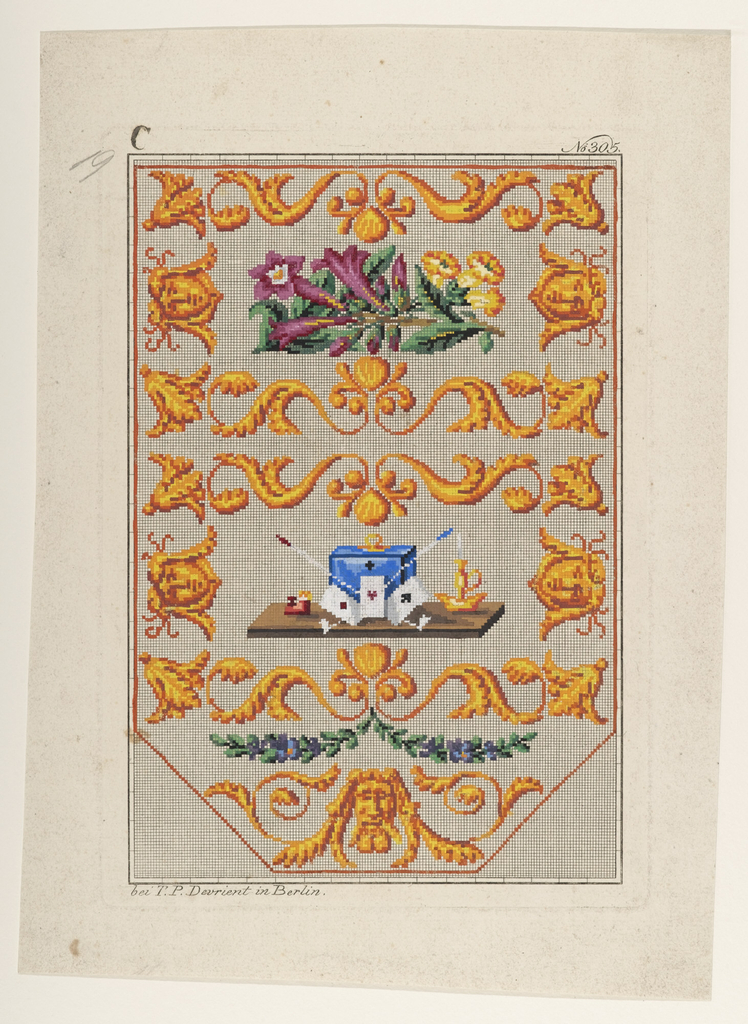The first pattern books documenting textile design motifs were published in the first quarter of the sixteenth century, and their proliferation into the nineteenth century allowed the wide dissemination of motifs and patterns used in samplers and other types of embroidery. Eventually, by the nineteenth century, embroidery patterns printed directly onto the foundation fabric were available, thereby eliminating the need to hand-draw the design. Later in the century, in a further mechanization of home embroidery, gridded designs—in which colored squares each indicate one stitch—such as this example became popular. Called Berlin woolwork patterns, they required far less technical ability than traditional free-form embroidery, and served to democratize embroidery.
Tombstone
Drawing: Wool Embroidery Design (Berlin Wool Works). Designed by T. P. Devrient, ca. 1860. Museum purchase through gift of Mrs. Abram S. Hewitt. 1947-121-3.
Collection Record
